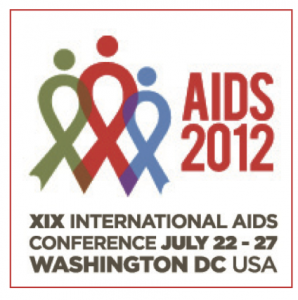Early initiation of ART is associated with growth recovery in children in NEVEREST-2
1 August 2012. Related: Conference reports, Antiretrovirals, Paediatric care, World AIDS 19 Washington 2012.
 Polly Clayden, HIV i-Base
Polly Clayden, HIV i-Base
The effect of initiating ART early – before 6 months of age – on children’s growth has not been well characterised.
The NEVEREST-2 trial, conducted in Johannesburg, was designed to assess the reuse of nevirapine (NVP) in children who were previously NVP-exposed and had initiated ritonavir-boosted lopinavir (LPV/r) based ART before 24 months of age. After achieving virologic suppression, children (n=195) were randomised to either continue receiving LPV/r or switch to nevirapine (NVP).
A poster at the 4th International Workshop on HIV Pediatrics, authored by Stephanie Shiau and colleagues from NEVEREST-2, showed an evaluation of the effect of age at ART initiation on growth outcomes (including weight, height, body mass index [BMI] and head circumference) in children virologically suppressed and followed for 48 months in this trial.
In order to perform the growth analysis, the investigators divided the children into three groups according to when they initiated ART, <6 months (n=54, 27.7%), 6-12 months (n=69, 35.4%), and 12-24 (n=72, 36.9%) months of age.
Before starting ART, the children were a mean age of 10.7 (+ 5.9 months) and their age- and sex-adjusted weight-for-age (WAZ), height-for-age (HAZ), BMI-for-age (BAZ), and head circumference-for-age Z-scores (HCAZ) – by WHO growth standards – did not differ between the groups. There was no difference in the proportions of children with low birth weight (<2500 grams; approximately 15% overall) or high pre-treatment viral load (just over half had >750,000 copies/mL) between groups. The proportions of children that were underweight, stunted, or wasted did not differ either – overall more children were stunted (76%) than underweight (51%) or wasted (21%).
The children’s weight height and head circumference were measured at regular 3 monthly study visits over 48 months after initiating ART.
The investigators used locally-weighted scatter plot smoothing to generate curves of WAZ, HAZ, BAZ, and HCAZ over time from ART initiation stratified by age when ART was started. They used generalised estimating equations to describe predictors of growth outcomes.
The investigators found overall, after ART initiation, WAZ increased in the first 12 months, dipped from 12 to 36 months and then was stable. HAZ increased steadily across the age groups for 48 months but remained below normal. BAZ increased in the first 12 months as WAZ increased and then declined through 48 months as HAZ increased. HCAZ steadily rose through 48 months in all age groups from a subnormal z-score to above 0.
Children <6 months when they started ART had a larger increase at first in both WAZ, 1.98 vs. 1.44, p=0.084, and HCAZ, 1.24 vs. 0.45, p=0.004, up to 12 months than children 12-24 months when they started ART. The youngest age group at initiation also had a larger increase in HAZ, 1.56 vs. 0.76, p=0.004, between 12 and 24 months on treatment than children 12-24 months at start of ART.
Between 24 and 36 months receiving ART, children who started ART <6 months had a significantly higher HAZ than children who started at 12-24 months (p=0.009). But, by 48 months on treatment there were no significant differences in the mean WAZ, HAZ, BAZ, or HCAZ between children <6, 6-12, or 12-24 months when they started ART.
The investigators also noted that girls had a significantly higher HAZ than boys, b=0.311, p=0.049 for all 48 months of follow up. They observed no differences in growth outcomes relative to time on ART between children with pre-treatment viral load above and below 750,000 copies/mL or between treatment randomisation groups. There was a greater change in WAZ in the group that switched to NVP relative to the time of randomisation.
Children with low birth weight had lower z-scores for all parameters over 48 months compared to those with higher birth weight. The WAZ for children who were underweight pre-treatment remained lower than that for those who were not underweight at this time point, as did the HAZ in the stunted children pre-treatment compared to those who were not.
Reference:
Shiau S et al. Early Initiation of ART Before 6 Months of Age is Associated with Faster Growth Recovery in Perinatally HIV-infected Children in South Africa. 4th International Workshop on HIV Pediatrics. 20-21 July 2012, Washington. Poster abstract P_46.

